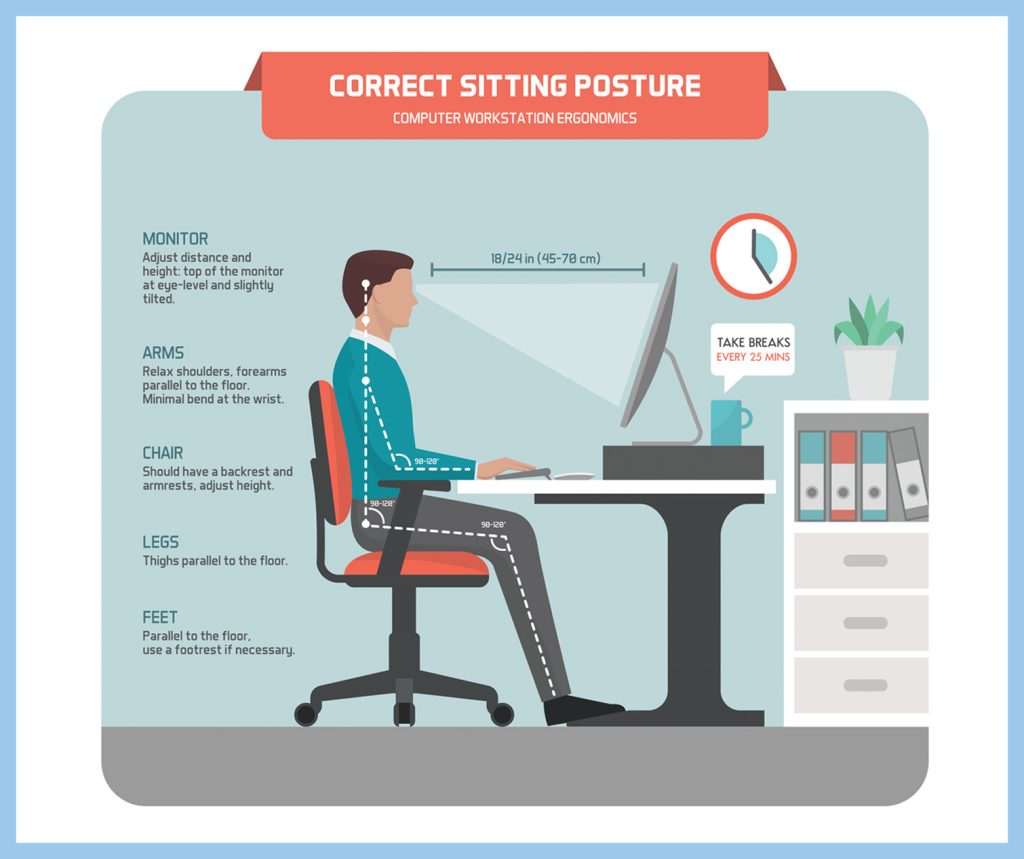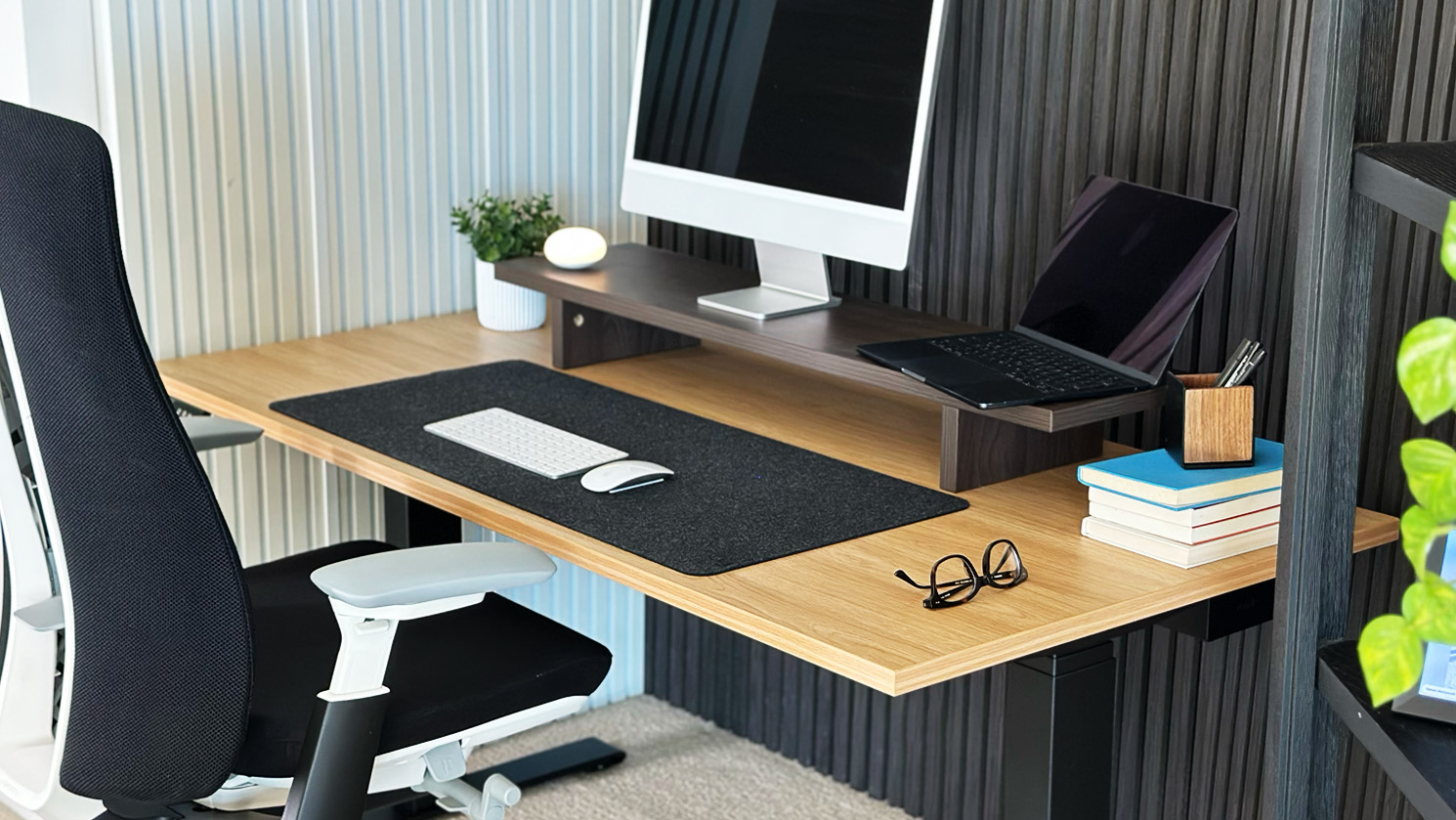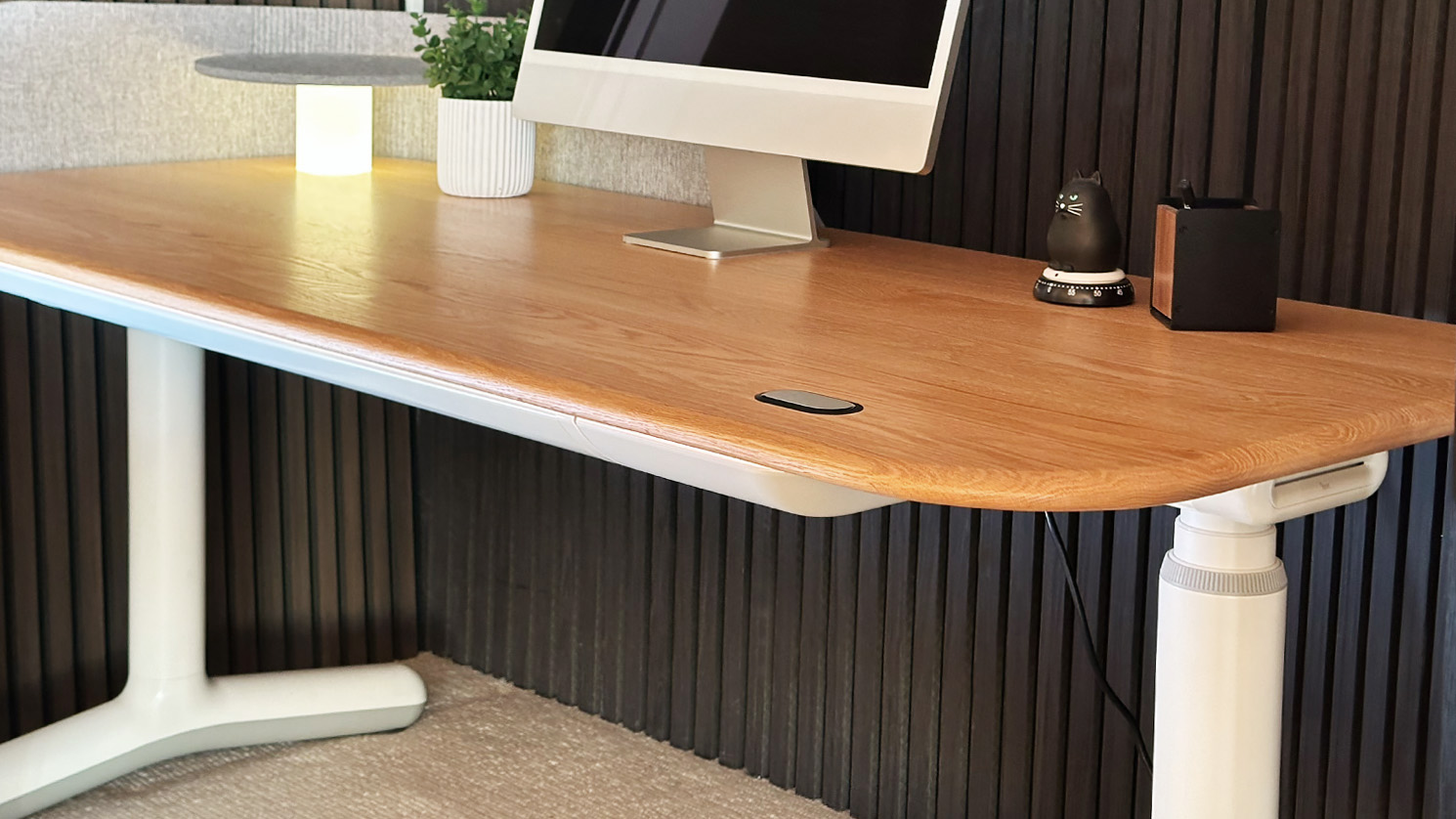Do you know the correct height of a desk in Australia? Chances are, you spend a lot of time working behind a desk but do not understand the importance of desk ergonomics.
Many of us:
- Are desk-bound for eight hours a day at work.
- Go home to use our laptop or tablet.
- Finish the day watching a film or a TV show.
Without an understanding of how these habits affect our bodies, we can expect to experience pain and injuries over time.
This guide will demystify office ergonomics, show you how to place your desk and chair in the right position and help you improve your general posture for greater comfort, health, and well-being.
Expert Tip.
You must begin by ensuring that your home office equipment offers a sufficient range of adjustments. For optimal results, invest in a standing desk, an ergonomic chair and an adjustable monitor arm.
How To Set The Correct Desk Height.
People make the mistake of obsessing about desk height, but ignoring monitor and office chair heights.
In doing so, they never achieve the optimal ergonomic position because these heights are interdependent.

Shown above: Keep making micro-adjustments to desk, monitor and chair heights until your limbs and hips are at optimal angles.
1. How High Should Your Desk Be?
Your goal is to keep your arms, wrists, and hands at optimal angles while you work. First, ensure that your chosen desk height:
- Offers enough clearance for your legs when sitting straight.
- Ensures that your computer screen is directly in line with your eye line.
Next, fine-tune your position by paying attention to the following:
- Foot position: Feet should be placed flat on the floor with knees in line (or slightly lower) than the hips.
- Arm position: Arms should rest on the armrests, without creating tension in your shoulders.
- Elbow position: The elbows should be at a right angle.
Important!
Ensure all items and clutter is removed from underneath your desk, to allow your legs to move freely and readjust when needed.
2. How High Should Your Monitor Be?
Eye strain and headaches are common workplace concerns. You can avoid them by ensuring your monitor or desk height sits at eye level.
- You should be at eye level with the top third of the screen.
- Tilting your monitor back 20 degrees will help to keep your eyes from straining throughout the day.
To choose the best monitor arm for your WFH setup, read my guide.
3. How High Should Your Office Chair Be?
Do you find yourself slouching in your chair more and more as the day goes on?
Incorrect sitting posture will affect the ergonomics of your entire body. You should:
- Have your thighs and feet parallel to the floor. Use a footrest if your legs don’t quite reach.
- Sit right at the back of your chair, not the front, to prevent slouching.
- Invest in chairs that recline (at least 110 degrees) and provide adequate lumbar support.
- Ensure the chairs conform to Australian Standard AS/NZS 4438-1997 (“Height-adjustable swivel chairs”). You can explore options here.
Expert Tip.
You may see that your desk meets ANSI/BIFMA standards. Here’s why it’s a good thing.
Is Using A Standing Desk Good For Your Health?

Shown above: Standing desks are only as good as those using them. The man has set the desk height correctly, but neglected to elevate is laptop screen to his eye level.
I highly recommend that you do. Standing desks have a range of benefits. Among them:
- Weight loss (although minimal) and decreased risk of disease.
- Increased productivity and well-being.
- Lower pain and discomfort.
- Improved circulation and less chance of blood clots forming in the legs.
A standing desk can also present its issues. Prevent problems by ensuring:
- You’re not leaning on something.
- You’re not slouching.
- That one leg is not bearing all the weight (this will impact your posture).
- You’re not standing for too long.
Expert Tip.
When you stand, the same ergonomic principles apply. Adjust the height of your monitor until you’re looking directly ahead. This will help prevent eye strain, reduce glare, and could eliminate those headaches.
What Problems Can Incorrect Desk Height Cause?
Sitting in an uncomfortable position for hours a day can lead to a range of issues such as:
- Lower back pain.
- Spinal curvature issues.
- Forward rounded shoulders.
- Vascular problems from poor blood flow.
- Muscle fatigue.
- Headaches.
- Carpal tunnel syndrome.
- Neck and shoulder pain.
Expert Tip.
Whilst there is physical therapy for the pain that comes with an incorrect sitting position, the best remedy is prevention.
Why Should You Care About Workplace Ergonomics?
Ergonomics is the study of the way people move in the workplace. More specifically, it looks at the relationship between bodies and movement – and the tools individuals use to move.
An understanding of ergonomics is essential for:
- Those who sit all day.
- Those who do physically demanding jobs.
- Those who use repetitive movements in their role.
When appropriately implemented, ergonomics can:
- Increase productivity and comfort.
- Reduce medical costs arising from injury and surgery.
- Create a safer work environment.
- Increase the overall enjoyment of the workplace.
Important!
For both well-being and safety, your desk’s cables must be tidy and tangle-free. Discover cable organisation tips here.
Final Words About Correct Desk Height.
Ergonomics is an essential practice in the modern workplace for our health and well-being.
Having Australians set their desk to the proper height will improve back, vascular, and eye problems associated with incorrect posture – along with overall productivity and comfort.
Steven






